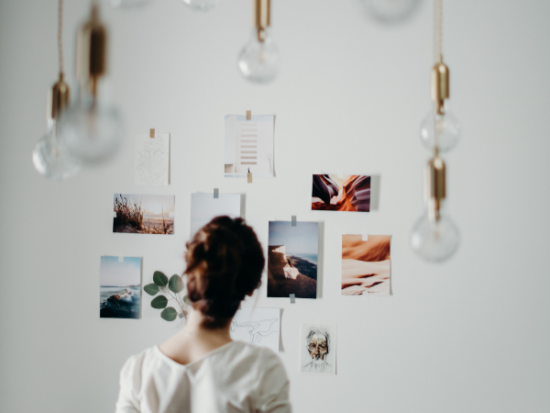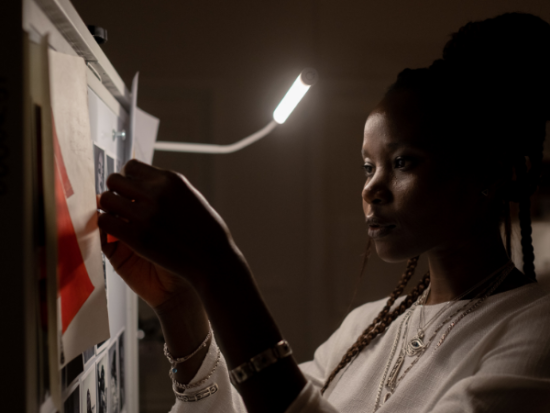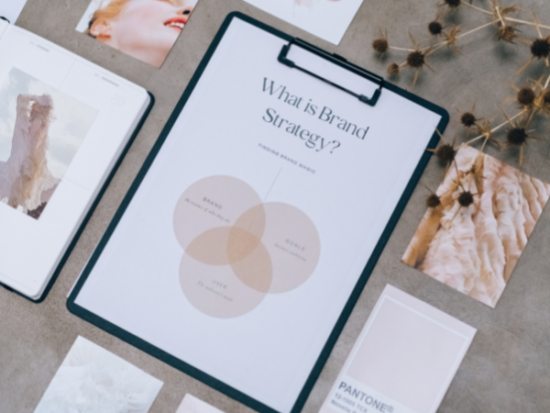How to create a mood board
The first step to designing an eye-catching room is to find your inspiration. If you’re starting from scratch, start with a mood board! There’s no denying that mood boards are a great tool when it comes to visualizing and planning your next project. This post will teach you how to quickly create your own in just a short time.
What is a mood board?

A mood board is a visual collection of thoughts or ideas. It’s an organized way to capture your thoughts and make them tangible in one place. Mood Boards are often used for brainstorming, fashion design, interior decorating, and much more!
Though mood boards have evolved since those days of attaching magazine cutouts to physical boards, it has come a long way in design. From the physical mood board, it’s now the more creative era of digital mood boards.
While it’s a great way to keep all of your inspirations in one place, it can also show how they work together in harmony with each other. It can help guide any designer through branding projects from beginning to end – from logo research, sketching ideas, graphic design to finalizing color palettes and typography treatments, making it easier to understand what works best with the rest of the design elements.
Reasons why you need a mood board
1. It’s a good brainstorming tool
Mood board provides a space for you to quickly gather images and materials from around the internet or physical surroundings without having to search through pages on google or sift through your old photo albums. It also lets you visually arrange them into groups to know what belongs together, which will help generate new ideas that would otherwise be difficult, if not impossible, to visualize as collages or scattered cutouts on paper.
2. An effective way of communicating your ideas
By having a mood board, everyone can share their thoughts visually without speaking a word about them. Nowadays, this is also how professionals present their ideas to their clients. Mood boards are used to visually communicate an idea, making it easier for others to understand what you’re trying to convey.
It helps inspire creativity and gives direction when discussing new projects. They’re also an inspiration for new designs, marketing materials, art pieces, etc. No matter how detailed or complicated they may be, all mood boards serve one purpose: communication!
Related Article: Types of Management Styles to Try
3. It can help you polish your ideas
Do you ever feel like your ideas are all over the place? Maybe there are some really good ones mixed in with a lot of not-so-great ones? Mood boards can help you refine your ideas and find what is most important to you. They’re also helpful for designers, photographers, writers, and anyone who has lots of creative thoughts running on their mind.
How to make your own mood board?
Your mood board visualizes your brand or project’s tone, style, and color palette. The best part about making a mood board is that it’s quick and easy! There are many online tools available for creating one, such as Pinterest boards or PowerPoint presentations. If you want to create a mood board but don’t know where to start or have no idea what tools you need for this project – read on for the simple steps to create a mood board.
Set up your theme
While you may have jotted down some ideas, brainstorming the key areas will help you decide on your theme. Think of the relevant keywords that best coordinate with these ideas.
Suppose you’re working on an interior design project. In that case, you might want to focus on color (keywords: lavender, chocolate brown, mustard yellow), style (keywords: minimalist, Victorian, tropical), or materials (keywords: rattan, concrete, wood). If you’ve zeroed in on the themes or you want to check your ideas visually, you can do an online image search. Try Pinterest, Instagram, Google, or Getty for inspiration.
Gather your materials
Once you’re all set with the theme, you can now prepare written content. Think out of the box and be creative. If you’ve checked images, you should be able to create the right keywords or relevant notes and taglines.
These don’t have to be long-form. But it should show your brand values and positioning. Then add photography or any designs that associate with your chosen project theme.
Incorporate images, sounds, and motion
Your images are the major players on your mood board, and they’re the ones who will relay your ideas to your clients or workmates. Choose the best images that convey your project’s goals.
Don’t forget the image credit. Also, adding animation and movement can make an impact on your presentation. You can get GIFs from Giphy, audio from Soundcloud, and videos from YouTube.
Manage your fonts, color, and styles.
Choose your color wisely. As colors also depict the personality of your mood board. To make it look clean, pick the same color hues of your chosen images.
Also, adding some metaphors or witty notes can show how familiar you are with your project. Choose the fonts and styles accordingly.
Related Articles
Organize all your ideas and written notes.
Now, it’s time to gather all your outputs and arrange them in one place. Don’t get startled if you feel like there’s a lot to work on.
It will take time before you can fully organize them. It might even look like a mess. But that’s fine! It’s your creativity’s outcome.
Start with a logo on your board. Then arrange everything. Arrange them according to their relationship to the other images and their importance. Change the size and positioning of each as you see fit.
Collaborate and ask for feedback.
If you’re working solo on this project or a team project, never forget to ask for ideas from others.
Especially if working as a team, it’s important to collaborate with them on concepts. Ask them for their feedback on the overall outcome. Be open to suggestions.
Key Takeaway
You don’t have to be a professional designer or artist to create an aesthetically pleasing mood board, and all you need is some creativity and the willingness to do the work! You’ll even enjoy it as you go through the process of creating your mood board.
It’ll bring out those creative juices you never knew you had. Once you’ve done one project, you can easily do it in your next creative endeavors.




